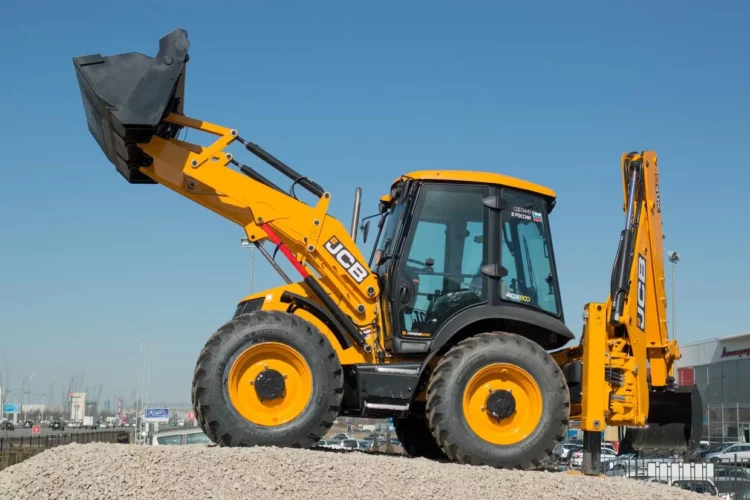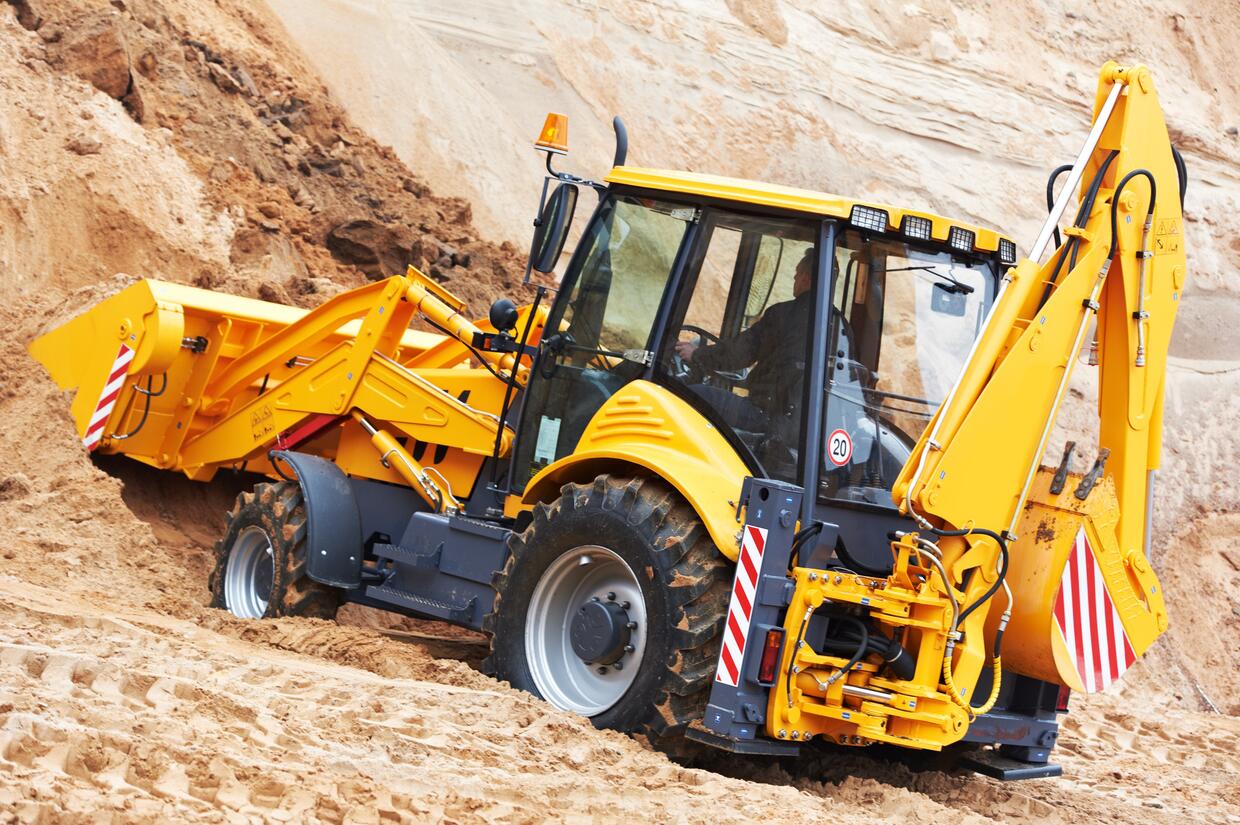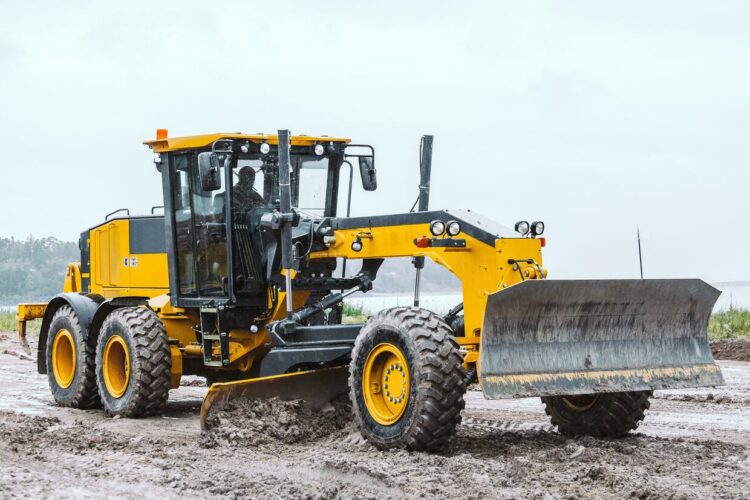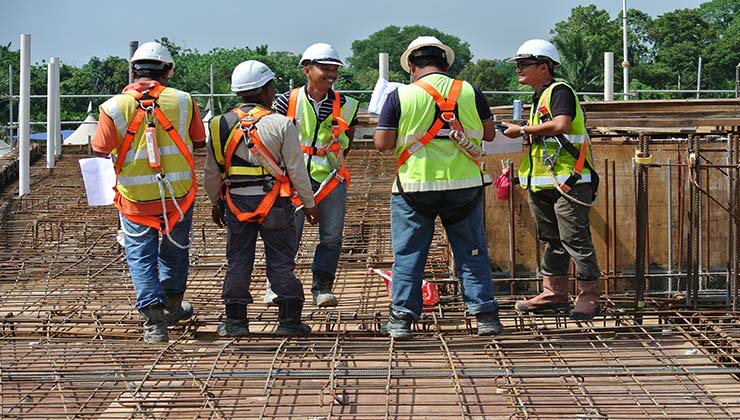Backhoes are commonly used in industrial, construction, excavation, demolition, and other small to mid-scale projects. In capable hands and for the right project, an average backhoe offers versatility and efficiency for any team trying to handle dirt, debris, and other ground materials.
Compared to other types of earthmoving equipment, backhoes offer a better range of versatility thanks to their ability to switch out their loader and rear bucket for other attachments. Features like size, power, and capacity are essential, but so is your operator’s attachment.
Before renting any of our backhoes, you should know the different types of backhoe attachments and which are best suited for your tasks.
What Is a Backhoe?
A backhoe or a backhoe loader is an excavating equipment offering more versatility and range than other earthmoving units. Backhoes come in different sizes, ranging from small to average-sized units to larger ones providing more reach and power. Backhoes have a front and back arm with versatile functions, though it commonly uses the front loader and the backhoe bucket.
At the front of the operator cabin is the loader, which consists of the arms, loader bucket, and hydraulic cylinder to move the front arm. There may also be a coupler where the operator can switch out the front loader with other attachments.
Behind the cab is the backhoe arm, which consists of a boom, dipper arm, and bucket. All of these are used to dig or scoop out materials. The bucket can also be replaced with other backhoe attachments to perform various tasks.
Types of Backhoe Attachments
A backhoe is the multi-purpose equipment of choice for smaller-scale operations and projects. Aside from factors such as budget, the versatility of backhoes and their attachment mean that backhoes perform various functions. Rather than having multiple types of equipment on-site, you can specify the buckets or attachments you require along with the unit. These are some of the most common backhoe attachments.
Auger
Applications: Digging holes for posts, footings, poles, trees, and large shrubs.
Also referred to as a drill, a backhoe auger is a corkscrew-shaped attachment that can drill holes into the earth. Depending on your unit size and the attachment, the backhoe auger can dig as deep as 32 feet with a hole diameter of up to 50 inches. It is the ideal attachment for erecting projects such as trees, poles, posts, or any structure that requires a deep underground base while keeping the surrounding soil undamaged.
Brooms
Applications: Clearing operations for sidewalks, warehouses, docks, and any work areas with fine or coarse materials.
Brooms are front or back attachments with a horizontal cylinder featuring heavy-duty steel bristles that roll as the backhoe moves. The bristles clear away fine and coarse debris along its path. Construction sites, commercial centers, and other industries use it to remove materials such as sand, concrete, and rubble. It can also remove dry mud and debris in parking lots, sidewalks, warehouses, docks, and other sites.
Bucket
Applications: Scooping, trenching, digging, grading, lifting, and moving soil or debris on the project or operation site.
The backhoe bucket attachment is the most commonly used and default attachment on the backhoe. Traditionally, a backhoe has two buckets: a front loader bucket used to scoop and lift materials; and a skid steer backhoe attachment with thumb or without thumb attachments. Depending on the unit’s size and weight capacity, various attachment sizes are available.
Grapples
Applications: Loading, unloading, lifting, pushing, moving, and salvaging materials.
Backhoe grapple attachments are installed in the front and used as a more secure way to carry and push materials than the backhoe bucket attachment. The attachment has a jaw-like shape consisting of two rows of clamps on the upper and lower ends. Operators can activate the backhoe grapple attachments to come together and close around the material to move it securely. Backhoe grapple attachments come in different widths, ranging from single-toothed grapples to wider grapples for larger materials.
Hammers
Applications: Breaking hard materials like concrete, demolition jobs, quarrying, and construction tasks.
While the backhoe auger is more appropriate for drilling, the hammer offers more targeted power. The attachment resembles a jackhammer and features a durable chisel that can break through hard materials. It’s an efficient solution for mid-sized projects involving road demolition and renovation rather than manually using a jackhammer. They’re also used in quarries, mines, and other projects that require breaking down hard materials such as boulders and compacted soil.
Pallet Forks
Applications: Hauling, lifting, and moving pallets and other larger items.
The pallet fork attachment is an alternative for those who want to avoid the manual operations of a pallet jack or avoid having extra equipment like a forklift on-site. The operator can adjust the pallet fork’s spacing to cater to pallets of different sizes. Depending on the backhoe’s size, it can be used indoors, though they’re more commonly used outdoors for construction and industrial loads on pallets.
Rakes
Applications: Land clearing, removing rocks, removing stumps and debris on the ground, and sifting.
Rakes feature multiple prongs that are used to move larger debris while allowing smaller debris and rubble to fall through. Operators typically use this to remove rocks, roots, tree branches, and other large debris that could affect operations. These are suitable for clearing large debris while reducing dumping and transportation costs as it keeps the soil within the area.
Rippers
Applications: Cut through compacted or firm ground to make digging easier.
Unlike the rake attachment, which features multiple prongs, the ripper has a single sharp claw. Its power allows it to bore deep into rock, asphalt, frozen earth, ice, and compacted soil. Before using the hammer, auger, or bucket attachment, you may need the ripper to create an opening into the ground to use as an entry point.
Snowplows
Applications: Clearing snow from roads, driveways, and other areas where vehicles need to pass.
Snowplows are a front attachment used to scoop and push aside snow. These are commonly rented during the winter by businesses, residential property owners, homeowners’ associations, and other public and private groups that want to remove snow from the ground and minimize the hazards of snow build-up. In addition to the snowplow attachment, operators can install a snowblower that collects snow from the plow and launches it farther away from the cleared path.
Thumbs
The thumb is an additional attachment that can be applied to the skid steer. It’s used to provide a better grip on the material being hauled by the skid steer bucket, such as roots, tree branches, tree trunks, broken concrete, rocks, and other debris during the project. Using a skid steer backhoe attachment with a thumb ensures no debris falls while transported across the operation site.
Benefits of Working with a Backhoe
Backhoes can overlap in function with other equipment, such as excavators. However, they have advantages and disadvantages, so knowing the best applications for them ensures you maximize your equipment. Some of the pros and cons include:
| Pros | Cons |
|
|
Overall, a backhoe may be the best option for projects where space is limited, and operators need versatility and precision more than heavy-duty power for larger tasks.
Find the Right Backhoe Attachments for Your Operations at National Dispatching
Backhoes offer the versatility and power you need for your operations. However, knowing the attachment to use ensures you’re making the most out of your unit and giving your team the tools to perform their best.
At National Dispatching, we deliver various backhoe attachments compatible with your rented backhoe loader. When ordering your units online, specify which buckets or attachments you require, and we’ll include the attachments with your unit. If you’re still unsure about which unit or attachments to rent for your operations, contact us today to get in touch with a specialist to discuss your projects’ needs, site, and budget.
Our team has decades’ worth of experience providing industrial equipment solutions. We cater to various markets, operations, and industries in the United States. We’ve developed a reputation for our reliability and customer service, so trust us and our equipment to come through for your operations.
We service clients throughout the United States through our qualified partner network. Browse our earthmoving equipment rentals to view our selection of backhoes and other available units, or get in touch with us to discuss your equipment requirements.




